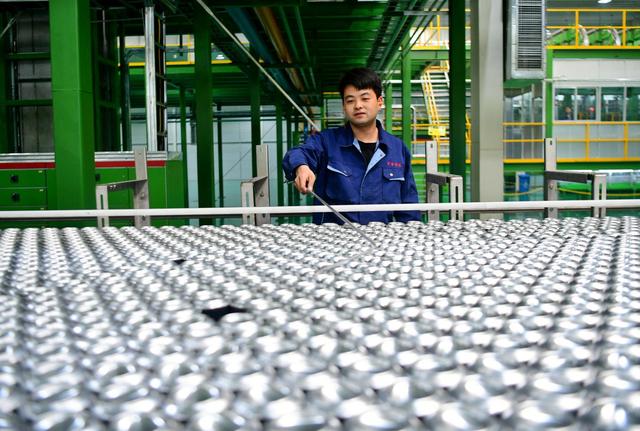Aluminum was first identified as an element in 1782, and the metal enjoyed great prestige in France, where in the 1850s it was more fashionable than even gold and silver for jewelry and eating utensils. Napoleon III was fascinated with the possible military uses of the lightweight metal, and he financed early experiments in the extraction of aluminum. Although the metal is found abundantly in nature, an efficient extraction process remained elusive for many years. Aluminum remained exceedingly high-priced and therefore of little commercial use throughout the 19th century. Technological breakthroughs at the end of the 19th century finally allowed aluminum to be smelted cheaply, and the price of the metal fell drastically. This paved the way for the development of industrial uses of the metal.
Aluminum was not used for beverage cans until after World War II. During the war, the U.S. government shipped large quantities of beer in steel cans to its servicemen overseas. After the war most beer was again sold in bottles, but the returning soldiers retained a nostalgic liking for cans. Manufacturers continued to sell some beer in steel cans, even though bottles were cheaper to produce. The Adolph Coors Company manufactured the first aluminum beer can in 1958. Its two-piece can could only hold 7 ounces (198 g), instead of the usual 12 (340 g), and there were problems with the production process. Nevertheless, the aluminum can proved popular enough to incite Coors, along with other metal and aluminum companies, to develop better cans.
The next model was a steel can with an aluminum top. This hybrid can had several distinct advantages. The aluminum end altered the galvanic reaction between the beer and the steel, resulting in beer with twice the shelf life of that stored in all-steel cans. Perhaps the more significant advantage of the aluminum top was that the soft metal could be opened with a simple pull tab. The old style cans required the use of a special opener popularly called a “church key,” and when Schlitz Brewing Company introduced its beer in an aluminum “pop top” can in 1963, other major beer makers quickly jumped on the band wagon. By the end of that year, 40% of all U.S. beer cans had aluminum tops, and by 1968, that figure had doubled to 80%.
While aluminum top cans were sweeping the market, several manufacturers were aiming for the more ambitious all-aluminum beverage can. The technology Coors had used to make its 7-ounce aluminum can relied on the “impact-extrusion” process,
The modern method for making aluminum beverage cans is called two-piece drawing and wall ironing, first introduced by Reynolds Metals company in 1963.
where a punch driven into a circular slug formed the bottom and sides of the can in one piece. The Reynolds Metals company introduced an all-aluminum can made by a different process called “drawing and ironing” in 1963, and this technology became the standard for the industry. Coors and Hamms Brewery were among the first companies to adopt this new can, and PepsiCo and Coca-Cola began using all-aluminum cans in 1967. The number of aluminum cans shipped in the U.S. rose from half a billion in 1965 to 8.5 billion in 1972, and the number continued to increase as aluminum became the nearly universal choice for carbonated beverages. The modern aluminum beverage can is not only lighter than the old steel or steel-and-aluminum can, it also does not rust, it chills quickly, its glossy surface is easily imprintable and eye-catching, it prolongs shelf life, and it is easy to recycle.
aluminum used in the beverage can industry is derived from recycled material. Twenty-five percent of the total American aluminum supply comes from recycled scrap, and the beverage can industry is the primary user of recycled material. The energy savings are significant when used cans are remelted, and the aluminum can industry now reclaims more than 63% of used cans.
Worldwide production of aluminum beverage cans is steadily increasing, growing by several billion cans a year. In the face of this rising demand, the future of the beverage can seems to lie in designs that save money and materials. The trend towards smaller lids is already apparent, as well as smaller neck diameters, but other changes may not be so obvious to the consumer. Manufacturers employ rigorous diagnostic techniques to study can sheet, for example, examining the crystalline structure of the metal with X-ray diffraction, hoping to discover better ways of casting the ingots or rolling the sheets. Changes in the composition of the aluminum alloy, or in the way the alloy is cooled after casting, or the thickness to which the can sheet is rolled may not result in cans that strike the consumer as innovative. Nevertheless, it is probably advances in these areas that will lead to more economical can manufacture in the future.
Post time: Aug-20-2021







